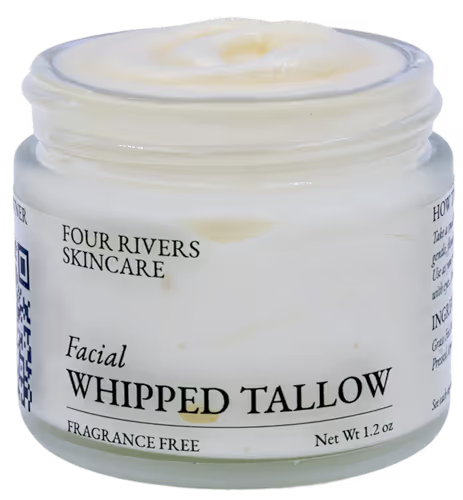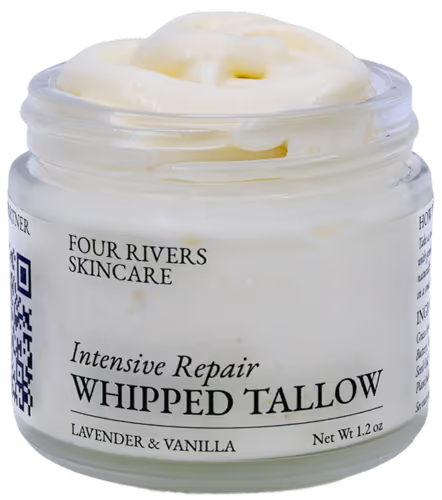Natural Face Moisturizer: How to Choose the Best Option for Your Skin
The natural face moisturizer market is crowded with options, each claiming to be the best solution for your skin. With so many choices, how do you separate effective products from expensive disappointments?
This guide helps you navigate natural moisturizer options, understand what actually works, and find the right choice for your specific skin needs.
What Makes a Moisturizer "Natural"
There's no legal definition of "natural" in skincare, which allows companies to use the term loosely. Generally, natural moisturizers emphasize ingredients derived from plants, minerals, or animals rather than synthetic laboratory creations.
However, natural doesn't automatically mean safe, effective, or better. Some natural ingredients can irritate skin, while some synthetic ingredients are perfectly safe and effective.
The key is understanding what works for your skin, regardless of origin.
Key Ingredients in Natural Face Moisturizers
Plant Oils
Common options include jojoba, argan, rosehip, and squalane. These provide moisture and often contain beneficial fatty acids and vitamins. The challenge is finding ones that work for your skin type without causing breakouts.
Plant Butters
Shea butter, cocoa butter, and mango butter are popular choices. They're rich and moisturizing but can be too heavy for facial use, especially for oily or acne-prone skin.
Animal-Derived Ingredients
Tallow, lanolin, and emu oil have been used for skincare for centuries. They often match human skin composition more closely than plant alternatives, leading to better absorption and compatibility.
Waxes
Beeswax and candelilla wax help create texture and provide some moisture barrier protection. They're often used in combination with oils and butters.
Botanical Extracts
Aloe vera, green tea, chamomile, and other plant extracts can provide additional benefits like soothing or antioxidant properties.
How to Choose Based on Skin Type
Dry Skin
Look for rich, nourishing ingredients that provide lasting moisture. Tallow, plant butters, and heavier oils work well. Your skin can handle more intensive formulations than other types.
Best ingredients: Beef tallow, shea butter, olive oil, avocado oilAvoid: Lightweight oils that evaporate quickly, alcohol-based products
Oily Skin
You still need moisture, but in lighter forms that won't clog pores or add excess oil. Look for non-comedogenic ingredients and lighter textures.
Best ingredients: Jojoba oil, squalane, lightweight tallow formulationsAvoid: Heavy butters, coconut oil, thick balms
Combination Skin
This can be tricky since different areas have different needs. Look for balanced formulations that provide moisture without being too heavy.
Best ingredients: Well-formulated tallow, jojoba oil, light plant oilsAvoid: Very heavy formulations, one-size-fits-all products
Sensitive Skin
Simplicity is your friend. Fewer ingredients mean fewer potential irritants. Look for pure, single-ingredient options or minimal formulations.
Best ingredients: Pure tallow, minimal formulations, fragrance-free optionsAvoid: Essential oils, fragrance, long ingredient lists, botanical extracts you haven't tested
Mature Skin
Focus on ingredients that support skin elasticity and repair. Look for products rich in vitamins and beneficial fatty acids.
Best ingredients: Tallow (rich in vitamins A, D, E, K), rosehip oil, argan oilAvoid: Drying ingredients, products without nourishing components
Red Flags in Natural Face Moisturizers
Extremely Long Ingredient Lists
Natural doesn't mean complicated. Products with 20+ ingredients are trying to be everything to everyone and often aren't optimized for any specific purpose.
Vague Claims
"Proprietary blend" and similar terms hide what's actually in the product. Transparent brands list ingredients clearly.
Marketing Over Substance
Beautiful packaging and compelling stories don't guarantee effectiveness. Focus on formulation quality, not marketing.
Too Good to Be True
Claims about erasing wrinkles, curing acne, or transforming skin overnight are unrealistic regardless of whether ingredients are natural or synthetic.
Strong Fragrances
Even natural fragrances from essential oils can irritate facial skin. Fragrance-free or very lightly scented options are often better for faces.
What Actually Matters in a Natural Moisturizer
Ingredient Quality
Where ingredients come from matters. Grass-fed tallow, organic plant oils, and carefully sourced botanicals provide better nutrition than conventional alternatives.
Proper Processing
How ingredients are extracted, refined, and combined affects their effectiveness. Cold-pressed oils retain more benefits than heat-processed versions. Properly rendered tallow is odorless and pure.
Appropriate Formulation
Face-specific formulations should be designed for facial skin's unique needs, not just body products in smaller jars.
Minimal Processing
Simpler formulations with fewer steps from source to final product often retain more beneficial properties.
Testing and Quality Control
Quality brands test for purity, contamination, and effectiveness. This matters regardless of whether ingredients are natural or synthetic.
Understanding Absorption and Performance
Different natural ingredients absorb at different rates and depths:
Fast-Absorbing: Squalane, jojoba oil, lightweight tallow formulationsModerate Absorption: Argan oil, rosehip oil, well-formulated tallow creamsSlow-Absorbing: Shea butter, coconut oil, thick balms
Fast absorption isn't always better. Your skin type and needs determine the ideal absorption rate.
The Truth About Tallow in Natural Face Moisturizers
Beef tallow deserves special mention because its fatty acid profile so closely matches human sebum. This natural compatibility makes it uniquely effective for many people.
Properly sourced and formulated tallow provides:
- Deep moisture that actually absorbs
- Natural vitamins A, D, E, and K
- Skin barrier support
- Anti-inflammatory properties from CLA
The key is choosing face-specific tallow formulations rather than heavy body balms.
How to Test a New Natural Moisturizer
Patch Test First
Apply a small amount to your inner arm or behind your ear for 24-48 hours. Watch for redness, itching, or irritation before using on your face.
Start with Evening Use
Try new products at night first when your skin is less exposed to environmental stressors. This reduces the risk of issues if the product doesn't agree with you.
Give It Time
Most skin needs 2-4 weeks to show how it will respond to a new product. Don't judge effectiveness after just a few days.
Watch for Changes
Pay attention to how your skin feels and looks. Increased dryness, breakouts, or irritation means the product isn't right for you, regardless of how natural it is.
Adjust Amount as Needed
Start with less product than you think you need. You can always use more, but using too much of even a great product can cause problems.
Common Mistakes with Natural Face Moisturizers
Assuming Natural Means Better
Some natural ingredients can irritate skin while some synthetic ingredients are perfectly safe. Focus on what works for your skin, not marketing terms.
Using Body Products on Face
Your face needs different formulations than your body. Don't apply body moisturizers to facial skin.
Changing Products Too Often
Give products time to work before switching. Constantly changing products can irritate skin and makes it impossible to identify what actually works.
Ignoring Your Skin's Response
If a product causes problems, stop using it even if reviews are glowing or the ingredients seem perfect on paper.
Expecting Miracles
Natural moisturizers can improve skin health and appearance, but they can't reverse decades of damage or work magic overnight.
Building a Natural Skincare Routine
Keep It Simple
You don't need 10 products. A good cleanser and quality moisturizer are the foundation. Add other products only if they serve a specific purpose.
Layer Properly
Apply products from thinnest to thickest. Water-based products first, then oil-based moisturizers.
Be Consistent
Regular use matters more than the perfect product. Consistency delivers results.
Adjust Seasonally
Your skin's needs change with weather. You might need richer moisture in winter and lighter options in summer.
Price vs. Value in Natural Moisturizers
Expensive doesn't always mean better, but quality ingredients and proper formulation cost more than cheap alternatives.
Look for:
- Transparent ingredient sourcing
- Proper testing and quality control
- Appropriate formulation for intended use
- Brands that invest in quality over marketing
A $40 moisturizer that works is cheaper than three $15 products that don't.
The Four Rivers Approach to Natural Face Moisturizer
At Four Rivers Skincare, we focus on purposeful formulation rather than ingredient count. Our face cream combines grass-fed tallow with coffee extract and vitamin E to provide deep nourishment, gentle exfoliation, and antioxidant protection.
We chose each ingredient for specific benefits, not to create an impressive label. The result is a natural face moisturizer that delivers real results without unnecessary complexity.
Our commitment to grass-fed sourcing, minimal ingredients, and face-specific formulation reflects our belief that natural skincare should be both effective and transparent.
Making Your Choice
The best natural face moisturizer for you depends on your specific skin type, concerns, and goals. Consider:
- What does your skin actually need?
- Which ingredients have worked for you in the past?
- Are you willing to give a product time to work?
- Do you prefer simple or complex formulations?
Natural skincare offers real benefits when you choose quality products formulated for your specific needs. Take time to find what works for your unique skin rather than following trends or marketing hype.
Ready to experience a natural face moisturizer designed for real results? Discover Four Rivers formulations made with purposeful ingredients and grass-fed tallow.


